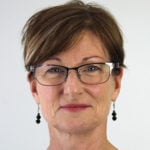At the time of writing, over half a million people have fled violence in Myanmar to seek refuge in Bangladesh in a dramatic exodus that is yet to abate.
Their ‘refuge’ is precarious indeed. Predominantly women and children are trapped in conditions that continue to threaten their safety and health due to the makeshift settlements, insufficient sanitation, severe food shortages and poor security overall. There are calls for resettlement options in wealthier countries.
In these chaotic circumstances, medical-humanitarian organisation Médecins Sans Frontières (MSF) has seen patients with severe dehydration, physical trauma and, in line with reports by other organisations, growing numbers of women showing signs of sexual violence.1 Our colleague Kate White, emergency coordinator in Bangladesh, has said ‘this is a fraction of the cases that are likely to be out there,’ and we know she’s right.2
So what can be done for such victims of sexual violence; what kind of care can we provide? What do we need to know about the hazards the women have faced? How can we adapt our care for the best outcomes in the context where we are providing it?
The global burden
In terms of global averages, an estimated 30 per cent of women with experience of a relationship have suffered intimate partner violence, while 7.2 per cent of women have been victims of sexual violence at the hands of a non-partner.3 4 The numbers are inexact and, very likely, underestimates, for various reasons. Poor or non-existent data collection and the ‘normalisation’ of violence in many contexts can be added to the many well-documented individual and structural barriers to receiving care, including shame, stigma and fear of repercussion, and lack of accessible, appropriate services.5 6 Of note, the evidence gap is even greater for men than women.
Non-partner violence can be exacerbated by a number of factors. Displacement and its push factors – especially conflict – can be the cause of a traumatic experience that the victim then carries for years.7 8 If recognised for resettlement as a refugee, they may carry it all the way to Australia.9
Defining sexual violence
The World Health Organization defines sexual violence as:
‘any sexual act, attempt to obtain a sexual act, unwanted sexual comments or advances, or acts to traffic, or otherwise directed, against a person’s sexuality using coercion, by any person regardless of their relationship to the victim, in any setting, including but not limited to home and work.’10
This definition is important to MSF and other humanitarian organisations, because in some countries where we work, the legal definition of sexual violence means rape only.
MSF’s response to sexual violence
MSF’s core model for sexual violence care combines medical and psychological care as a priority in the first consultation. This patient-centred care is offered for free, in strict confidentiality. Our impetus is: ‘What can we do for this person that’s appropriate for them and is going to make their life a little bit better?’
Over 90 per cent of our sexual violence patients are women and children. Our care comprises treatment of physical injuries; prevention, treatment and vaccination against infections such as HIV and STIs and prevention and management of unwanted pregnancy, if appropriate; and a large component is psychological support, which can include referral if needed and available. We also provide the patient with a medical certificate.
Beyond the first consultation, when we have the capacity or are in a context to provide further care by ourselves or with others, we do. Networking is key to comprehensive care and assistance for the individual, and to influencing a holistic response across multiple sectors.11
A violent journey
Most of the victims of sexual violence in our emergency programs have been forced to flee due to high levels of conflict and instability. In these situations, people often have limited access to food, safety, shelter or basic healthcare. This makes them vulnerable to sexual exploitation – you may have heard of the term ‘survival sex’ and coercion such as, ‘I’ll give you food for your children if you agree to have sex with me’. More sinisterly, in high-conflict areas, sexual violence is also a military strategy for destabilisation of communities. It can be deployed on a very large scale, reverberating through the family and the whole community.12
Since mid-2016, more than one million South Sudanese refugees have fled to Uganda, into the northwest. Initially MSF responded with large-scale water and sanitation services and inpatient and outpatient care. By December 2016, the settlement known as Bidi Bidi had reached capacity, spurring the opening of a new settlement, Imvepi.
Care for victims of sexual violence still lags behind other sexual and reproductive health services at the onset of a humanitarian crisis, such as conflict or natural disaster, and MSF (not the only responder) commenced care in both Ugandan settlements in 2017.
Between April and May 2017, a reported 86 per cent of arrivals were women and children. Typically, women with children and/or hiding along the way have endured a slower journey. The testimonies of MSF’s patients confirmed their collective vulnerability. They had suffered sexual violence, often rape, mostly en route, including at the border. Armed soldiers were the most implicated; the women were attacked in groups rather than as individuals, and many were not able to reach care until days or weeks after the attack, missing the deadlines for effective prevention of HIV or unwanted pregnancy.
Establishing a dedicated program
Employing mostly Ugandan staff, we developed our program with an emphasis on raising awareness and ensuring that our services were accessible and appropriate. We created community outreach teams to talk about sexual violence and how care was available. Witness to other violence as well, victims can be traumatised, scared and desensitised to violence, which often impedes their ability to seek help. People needed to know that there was a safe and confidential place where they could be listened to, supported and followed up if necessary.
We also undertook sensitisation training with our staff. In contexts where violence is the ‘norm’ or common, it is important to educate staff in all issues associated with sexual violence. This then allows them to be empathetic to the victims and provide the most appropriate care. Our staff’s positive embrace of this role was crucial to helping us expand our provision of care.
We set up fixed, semi-fixed and mobile clinics to reach the dispersed population. We would travel with our staff, our tents with moveable partitions for privacy and confidentiality, and all relevant equipment and medicine needed to set up afresh each day. Through coordination with other organisations, we have also been able to continue to identify other pockets of people that are likely to have suffered sexual violence but are yet to receive care, as well as secure referral pathways for them.
Other pathways to care
Meanwhile in the northern hemisphere on Lesbos, a Greek island and hot spot for crossing the Mediterranean, there was a huge surge in arrivals between April and June. At the same time, healthcare and other services for them were severely cut, increasing their vulnerability. MSF identified victims of violence via mental health assessments, but predominantly in our women’s health clinics. This included approximately half of the women seen for a gynaecological check-up: one-third assaulted before they left their country, the other two-thirds en route.13 For many, their disclosure to MSF was their first ever. For weeks and months, they had completely lacked the medical or psychological care that could help them recover.
Never too late
There are many frustrations and barriers in providing sexual violence care, especially in contexts of conflict and displacement. Being able to identify victims and provide timely care to resolve pressing medical and psychosocial needs is one of the greatest challenges. Ensuring appropriate care, based on age, gender or culture, is not possible without careful planning and implementation. Yet, however many weeks, months or years later it may be, as healthcare providers we can offer the support that allows a victim to share their long-held story and assist them in starting their journey to recovery.
References
- Office of the Special Representative on Sexual Violence in Conflict. UN Special Representative on Sexual Violence in Conflict Pramila Patten condemns sexual violence in Myanmar and calls for measures to protect and assist Rohingya women and girls. Sep 19 2017. Available from: drive.google.com/file/d/0B0yOtWQMcDpZRzlrQVFCclRFLWc/view.
- Lewis S, Wilkes T. UN Medics see evidence of rape in Myanmar army ‘cleansing’ campaign. 2017. Available from: www.reuters.com/article/us-myanmar-rohingya-rape-insight/u-n-medics-see-evidence-of-rape-in-myanmar-army-cleansing-campaign-idUSKCN1BZ06X.
- WHO. Global and regional estimates of violence against women: Prevalence and health effects of intimate partner violence and non-partner sexual violence. 2013. World Health Organization.
- Abrahams N, Devries K, Watts C, et al. Worldwide prevalence of non-partner sexual violence: a systematic review. Lancet. 2014;383:1648-54.
- WHO. Global and regional estimates of violence against women: Prevalence and health effects of intimate partner violence and non-partner sexual violence. 2013. World Health Organization.
- Abrahams N, Devries K, Watts C, et al. Worldwide prevalence of non-partner sexual violence: a systematic review. Lancet. 2014;383:1648-54.
- WHO. Global and regional estimates of violence against women: Prevalence and health effects of intimate partner violence and non-partner sexual violence. 2013. World Health Organization.
- UN Action on Sexual Violence in Conflict. Stop Rape Now. 2017. Available from: www.stoprapenow.org/.
- The Australian Government Department of Social Services. Getting Settled: Women Refugees in Australia. 2013. Available from: www.dss.gov.au/sites/default/files/documents/01_2014/sc_update_women_at_risk.pdf.
- WHO. Global and regional estimates of violence against women: Prevalence and health effects of intimate partner violence and non-partner sexual violence. 2013. World Health Organization.
- García-Moreno C, Hegarty K, d’Oliveira AF, et al. The health-systems response to violence against women. Lancet. 2015;385(9977):1567-79.
- UN Action on Sexual Violence in Conflict. Stop Rape Now. 2017. Available from: www.stoprapenow.org/.
- Medecins Sans Frontieres. A Dramatic Deterioration for Asylum Seekers on Lesbos. 2017. Available from: www.msf.org/sites/msf.org/files/msf_lesbos_vulnerability_report1.pdf.







Leave a Reply